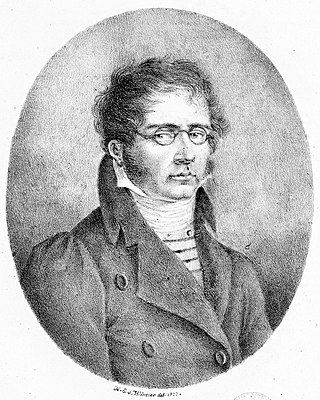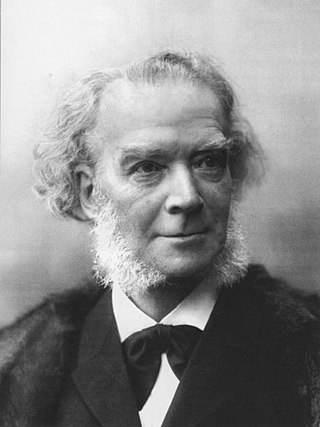This article relies largely or entirely on a single source .(February 2024) |
Felix Mendelssohn's Cello Sonata No. 1 in B-flat major, Op. 45 was composed in October 1838. [1]
This article relies largely or entirely on a single source .(February 2024) |
Felix Mendelssohn's Cello Sonata No. 1 in B-flat major, Op. 45 was composed in October 1838. [1]
The work has three movements:
A typical performance of the sonata lasts 25 minutes.

Ludwig van Beethoven's Opus 1 is a set of three piano trios, first performed in 1795 in the house of Prince Lichnowsky, to whom they are dedicated. The trios were published in 1795.

Sonata, in music, literally means a piece played as opposed to a cantata, a piece sung. The term evolved through the history of music, designating a variety of forms until the Classical era, when it took on increasing importance. Sonata is a vague term, with varying meanings depending on the context and time period. By the early 19th century, it came to represent a principle of composing large-scale works. It was applied to most instrumental genres and regarded—alongside the fugue—as one of two fundamental methods of organizing, interpreting and analyzing concert music. Though the musical style of sonatas has changed since the Classical era, most 20th- and 21st-century sonatas still maintain the same structure.

Franz Ignaz Danzi was a German cellist, composer and conductor, the son of the Italian cellist Innocenz Danzi (1730–1798) and brother of the noted singer Franzeska Danzi. Danzi lived at a significant time in the history of European music. His career, spanning the transition from the late Classical to the early Romantic styles, coincided with the origin of much of the music that lives in our concert halls and is familiar to contemporary classical-music audiences. In his youth he knew Wolfgang Amadeus Mozart, whom he revered; he was a contemporary of Ludwig van Beethoven, about whom he — like many of his generation — had strong but mixed feelings and he was a mentor for the young Carl Maria von Weber, whose music he respected and promoted.
The Piano Quintet in F minor, Op. 34, by Johannes Brahms was completed during the summer of 1864 and published in 1865. It was dedicated to Her Royal Highness Princess Anna of Hesse. As with most piano quintets composed after Robert Schumann's Piano Quintet (1842), it is written for piano and string quartet.

Carl Heinrich Carsten Reinecke was a German composer, conductor, and pianist in the mid-Romantic era.

Ferdinand Ries was a German composer. Ries was a friend, pupil and secretary of Ludwig van Beethoven. He composed eight symphonies, a violin concerto, nine piano concertos, three operas, and numerous other works, including 26 string quartets. In 1838 he published a collection of reminiscences of his teacher Beethoven, co-written with Beethoven's friend, Franz Wegeler. Ries' symphonies, some chamber works—most of them with piano—his violin concerto and his piano concertos have been recorded, exhibiting a style which, given his connection to Beethoven, lies between the Classical and early Romantic styles.
Cello Sonatas No. 1 and No. 2, Op. 5, are two sonatas for cello and piano written by Ludwig van Beethoven in 1796, while he was in Berlin. While there, Beethoven met the King of Prussia Friedrich Wilhelm II, an ardent music-lover and keen cellist. Although the sonatas are dedicated to Friedrich Wilhelm II, Ferdinand Ries tells us that Beethoven "played several times at the court, where he also played the two cello sonatas, opus 5, composed for Duport and himself". Although Jean-Pierre Duport was one of the King's teachers, it is now thought to have been his brother Jean-Louis Duport who had the honor of premiering these sonatas.

Anton Franz Josef Eberl was an Austrian composer, teacher and pianist of the Classical period. He was a student of Salieri and Mozart. He was also seen as an early friend and rival of Beethoven.
The Cello Sonata in G minor, Op. 65, was written by Frédéric Chopin in 1846-1847. It is one of only nine works of Chopin published during his lifetime that were written for instruments other than piano. Chopin composed four sonatas, the other three being piano sonatas. The cello sonata was the last of Chopin's works to be published in his lifetime.
The Sonatas for cello and piano No. 4 in C major, Op. 102, No. 1, and No. 5 in D major, Op. 102, No. 2, by Ludwig van Beethoven were composed simultaneously in 1815 and published, by Simrock, in 1817 with a dedication to the Countess Marie von Erdődy, a close friend and confidante of Beethoven.

The Cello Sonata No. 2 in F major, Op. 99, was written by Johannes Brahms in 1886, more than twenty years after completing his Sonata No. 1. It was first published in 1887. It was written for, dedicated to and first performed by Robert Hausmann, who had popularised the First Sonata, and who would the following year be given the honour of premiering the Double Concerto in A minor with Joseph Joachim.

Antonio Vivaldi composed several sonatas for cello and continuo. A set of six cello sonatas, written between 1720 and 1730, was published in Paris in 1740. He wrote at least four other cello sonatas, with two manuscripts kept in Naples, another in Wiesentheid, and one known to be lost.
The Piano Quintet No. 2 in E major, Op. 31, was composed by the French composer Louise Farrenc in 1840.
Henri Vieuxtemps's Viola Sonata in B-flat major, Op. 36 is a composition for viola and piano composed in 1860, and published in 1862.

René de Boisdeffre was a French composer. He is the author of some 60 pieces of chamber music as well as a few pieces for piano and vocal music. General de Boisdeffre was his cousin.